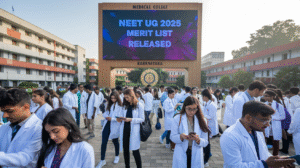Are you dreaming of pursuing an MBBS degree in India but unsure about your options as a Non-Resident Indian (NRI)? 🎓 Look no further! We’re here to shed light on the NRI Quota for MBBS – a golden opportunity for aspiring medical students with Indian roots living abroad.
Did you know that 15% of seats in Indian medical colleges are reserved for NRI students? 🌟 This special quota opens doors to prestigious institutions across the country, from Puducherry to Karnataka, with a unique set of eligibility criteria and application processes. However, navigating this path can be challenging, with complex documentation requirements and varying fee structures. But don’t worry – we’ve got you covered!
In this comprehensive guide, we’ll walk you through everything you need to know about the NRI Quota for MBBS. From understanding eligibility criteria and application processes to exploring fee structures and alternative medical courses, we’ll equip you with the knowledge to make informed decisions about your medical education journey in India. So, let’s dive in and unravel the mysteries of the NRI Quota together!
Understanding the NRI Quota for MBBS

A. Definition and purpose of NRI quota
The NRI (Non-Resident Indian) quota for MBBS is a special allocation of seats in medical colleges across India, specifically designed for students with NRI status. We understand that this quota serves a dual purpose:
- It provides opportunities for NRI students to pursue medical education in India without competing directly against domestic applicants.
- It allows Indian medical institutions to attract international talent and diversity.
The NRI quota is highly competitive due to the limited number of seats available. It’s important to note that while this quota offers a pathway for NRI students, it generally comes with higher fees compared to those for Indian applicants.
B. Participating states and colleges
We’ve found that several states in India actively participate in offering NRI quota seats for MBBS programs. Some of the key states include:
- Haryana
- Punjab
- Himachal Pradesh
- Rajasthan
- Puducherry
Notable colleges that offer NRI quota seats include:
| College Name | State | NRI Seats |
|---|---|---|
| Vinayak Mission Medical College | Puducherry | 41 |
| Sree Siddhartha Medical College | Karnataka | 19 |
| Maharishi Markendeshwar Institute | Haryana | 22 |
It’s crucial to understand that the availability of seats and participating colleges may vary from year to year. We recommend thoroughly researching and verifying the current list of participating institutions before applying.
C. Percentage of seats reserved under NRI quota
We can confirm that the NRI quota typically reserves 15% of seats for Non-Resident Indian students. This allocation applies to both government and private medical institutions across India. However, it’s essential to note that the exact percentage may vary slightly depending on the state and individual college policies.
The distribution of these seats among different colleges can be quite varied. For instance:
- Some colleges may have a higher number of NRI seats, like Vinayak Mission Medical College in Puducherry with 41 seats.
- Others might have fewer seats, such as Sree Siddhartha Medical College in Karnataka with 19 seats.
We’ve observed that the number of seats can change annually, so it’s crucial for prospective students to check the most recent information when considering their options.
It’s worth mentioning that while the NRI quota offers a specific pathway for eligible students, the competition for these seats can still be intense due to their limited number. However, we’ve found that the competition for NRI seats is often lower compared to regular seats, making it a viable option for qualified NRI students.
Now that we’ve covered the basics of the NRI quota for MBBS, including its definition, participating states and colleges, and the percentage of seats reserved, we’ll move on to discuss the eligibility criteria for the NRI quota. This next section will provide crucial information for students looking to apply through this pathway.
Eligibility Criteria for NRI Quota
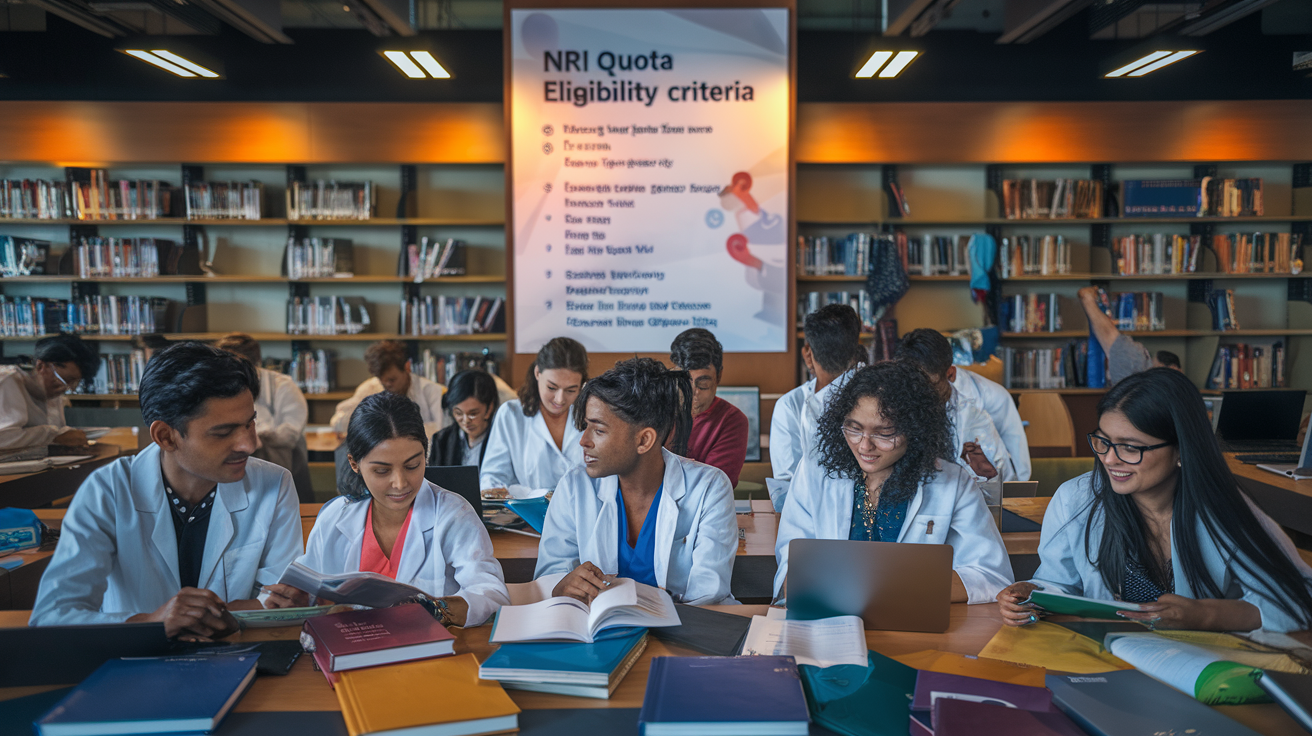
Now that we’ve covered the basics of understanding the NRI Quota for MBBS, let’s delve into the specific eligibility criteria that candidates must meet to qualify for this coveted opportunity.
A. Age requirements
We understand that age is a crucial factor in determining eligibility for the NRI Quota. Aspiring medical students must fall within the age range of 17 to 25 years to be considered for this program. This requirement ensures that candidates are at an appropriate stage in their academic journey to pursue medical education.
B. Academic qualifications
When it comes to academic qualifications, we’ve found that maintaining high standards is essential. Candidates applying through the NRI Quota must have achieved a minimum of 60% in Physics, Chemistry, and Biology in their Class 12 examinations. This requirement underscores the importance of a strong foundation in science subjects for success in medical studies.
C. NEET exam requirements
We can’t stress enough the significance of the National Eligibility cum Entrance Test (NEET) in the NRI Quota application process. All candidates, regardless of their NRI status, must successfully complete the NEET exam. This standardized test ensures that all applicants meet a common benchmark of knowledge and aptitude for medical education.
D. NRI status and sponsorship conditions
To qualify for the NRI Quota, we must emphasize the importance of meeting specific NRI status and sponsorship conditions:
- Valid passport: Candidates must possess a valid passport, which serves as proof of their NRI, OCI, or PIO status.
- Direct blood relative sponsorship: Financial support must come from a direct blood relative, ensuring a genuine connection to the NRI community.
Here’s a breakdown of the key eligibility criteria in a convenient table format:
| Criteria | Requirement |
|---|---|
| Age | 17-25 years |
| Academic Score | Minimum 60% in Physics, Chemistry, and Biology (Class 12) |
| NEET | Successful completion required |
| NRI Status | Valid passport (NRI, OCI, or PIO) |
| Sponsorship | Direct blood relative as financial supporter |
We’ve observed that meeting these eligibility criteria is crucial for candidates hoping to benefit from the NRI Quota. Some key points to remember include:
- The 15% reservation of seats for NRI students applies to both government and private institutions.
- Notable colleges participating in this initiative include Vinayak Mission Medical College in Puducherry, Sree Siddhartha Medical College in Karnataka, and Maharishi Markendeshwar Institute in Haryana.
- While competition for NRI seats is often lower compared to regular seats, candidates must still navigate a structured and sometimes challenging admission process.
With these eligibility criteria in mind, we’ll next explore the application process for the NRI Quota. Understanding the requirements is just the first step; knowing how to navigate the application process is equally important for securing a spot in an Indian medical college through the NRI Quota.
Application Process

Now that we’ve covered the eligibility criteria for the NRI quota, let’s delve into the application process. This crucial step requires careful attention to detail and adherence to specific procedures.
A. Qualifying NEET and checking cut-offs
We begin the application process by taking the NEET-UG entrance exam. This is a mandatory requirement for NRI candidates seeking MBBS admission in India. After completing the exam, we must check the cut-off scores, which can vary significantly. It’s important to note that the competition for NRI quota seats is often intense, so achieving a high score is crucial.
B. State-specific counseling procedures
Once we’ve qualified NEET, we need to register for state-specific counseling processes. These typically commence around September or October. Here’s a brief overview of the counseling process:
- Register on the Medical Council of India (MCI) website
- Participate in the allocation process based on NEET scores and preferences
- Follow the unique counseling procedures for each state
It’s essential to research and understand the specific requirements for the states we’re interested in, as procedures can vary.
C. Required documents and certificates
We must prepare and submit a comprehensive set of documents for our MBBS application under the NRI quota. Here’s a list of commonly required documents:
- Valid passport
- NEET scorecard
- Class 12 mark sheets
- Entrance exam scorecards (if applicable)
- Medical fitness certificate
- Migration certificate
- Nationality certificate
- Educational qualifications
- Various affidavits as required
It’s crucial to ensure all documents are up-to-date and properly authenticated to avoid any delays in the application process.
D. Proof of NRI status
Proving our NRI status is a critical aspect of the application process. We need to provide documentation that establishes our eligibility for the NRI quota. This typically includes:
| Document Type | Purpose |
|---|---|
| Passport | Proves citizenship and residency |
| NRI certificate | Confirms NRI status |
| Sponsorship documents | Establishes relationship with NRI sponsor |
| Residency proof | Shows duration of stay outside India |
Additionally, we must prove a blood relationship to our NRI sponsor and meet the residency criteria, which often requires living outside India for at least five years.
As we navigate this application process, it’s important to remember that each state and institution may have slight variations in their requirements. We should always double-check the specific guidelines for our chosen colleges and states.
With this comprehensive understanding of the application process, we’re now prepared to move on to the next crucial aspect of pursuing MBBS under the NRI quota: the fee structure and financial considerations. This next section will provide insights into the costs associated with this educational path and help us plan our finances accordingly.
Fee Structure and Financial Considerations

Now that we’ve covered the application process, let’s delve into the financial aspects of pursuing an MBBS through the NRI quota. Understanding the fee structure and financial considerations is crucial for prospective students and their families.
A. Tuition fees in government vs private colleges
When it comes to NRI quota MBBS admissions, there’s a significant difference in tuition fees between government and private colleges. While we don’t have specific figures for government colleges in our reference content, it’s generally understood that government institutions offer more affordable options. Private colleges, on the other hand, tend to have higher fee structures.
For instance, in private medical colleges, we’ve seen fees ranging from USD 20,000 per annum to as high as USD 100,000 for the entire course. It’s important to note that these fees are subject to change, and we always recommend verifying the current fee structure directly with the institutions you’re interested in.
B. State-wise fee variations
The fee structure for NRI quota MBBS seats varies significantly across different states in India. Let’s take a look at some examples:
| State | Annual Fee (USD) |
|---|---|
| Himachal Pradesh | 20,000 |
| Puducherry | ~25,000* |
*Note: Puducherry’s total course fee is mentioned as USD 100,000, which we’ve divided by 4 years for an approximate annual fee.
These examples showcase the wide range of fees you might encounter. Some states, like Gujarat and Karnataka, are known to have private medical colleges that reserve seats for NRI students, but their specific fee structures weren’t provided in our reference content.
C. Sponsorship requirements
When applying through the NRI quota, we need to be aware of the sponsorship requirements. While our reference content doesn’t provide detailed information on this aspect, it’s crucial to understand that financial sponsorship is a key component of the NRI quota application.
Here are some important points to consider:
- Proof of blood relationship: We need to provide evidence of our blood relationship with the financial sponsor.
- Valid documentation: Ensure that all financial documents are up-to-date and comply with the institution’s requirements.
- Long-term commitment: Remember that sponsorship isn’t just for the first year; it’s a commitment for the entire duration of the MBBS program.
It’s worth noting that the specific sponsorship requirements may vary between institutions and states. We always recommend thoroughly researching and confirming these details with the colleges we’re applying to.
As we consider these financial aspects, it’s important to weigh them against the opportunities and challenges that come with pursuing an MBBS through the NRI quota. In the next section, we’ll explore these challenges and opportunities in detail, helping us make a well-informed decision about our medical education journey.
Challenges and Opportunities
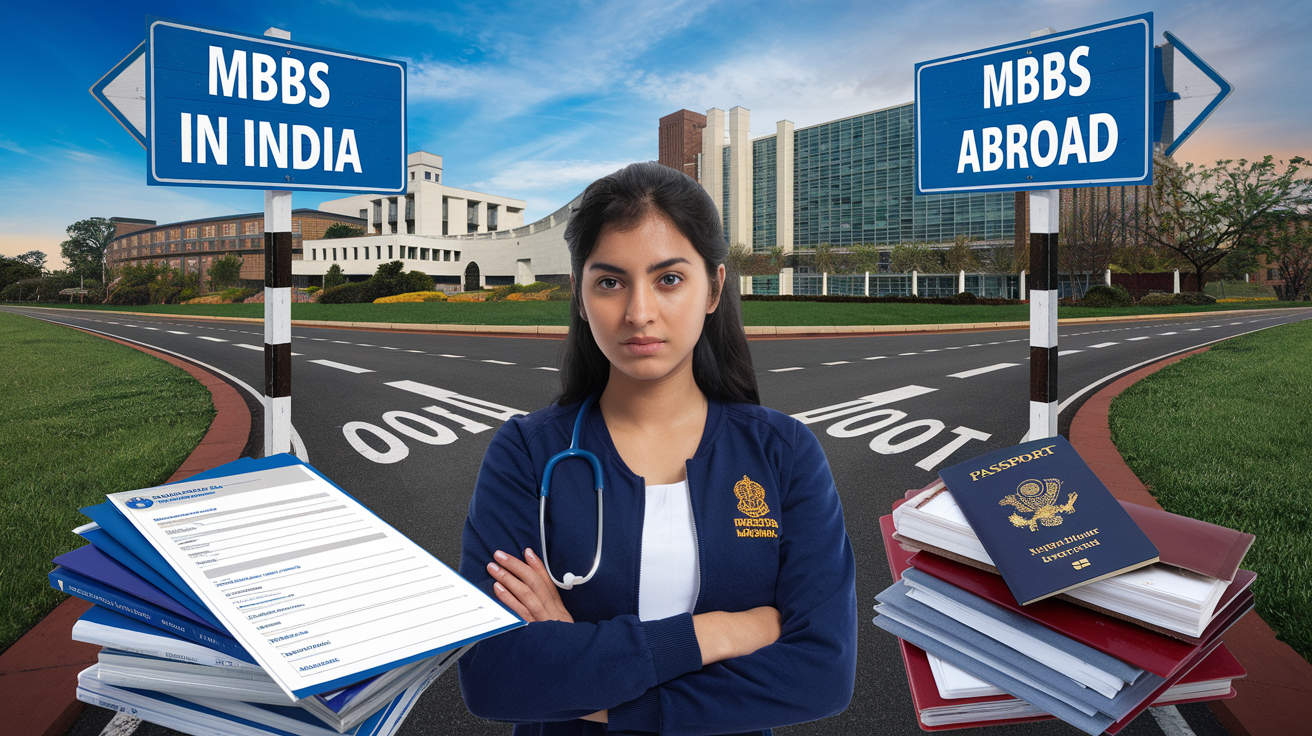
Now that we’ve explored the fee structure and financial considerations for NRI quota MBBS, let’s delve into the challenges and opportunities that await NRI students pursuing medical education in India.
Limited seat availability
One of the most significant challenges NRI students face when applying for MBBS programs through the NRI quota is the limited number of seats available. Similar to the competitive nature of BS/MD programs mentioned in our reference, the NRI quota for MBBS also faces a high applicant-to-seat ratio. We’ve observed that:
- Many medical colleges in India allocate only a small percentage of their total seats to the NRI quota.
- The demand for these seats often far exceeds the supply, leading to intense competition.
- This scarcity can be compared to the admission statistics of institutions like Brown University and Drexel University for their BS/MD programs, where the number of applicants significantly outweighs the number of accepted students.
Documentation complexities
Another hurdle NRI students must overcome is the complex documentation process. We’ve found that:
- Applicants need to provide extensive proof of their NRI status, which can be challenging and time-consuming.
- Required documents may include:
- NRI certificate
- Passport copies
- Visa information
- Proof of residence in a foreign country
- Financial statements
This documentation process can be likened to the rigorous requirements of BS/MD programs, where students must maintain specific performance criteria and provide ongoing proof of their eligibility.
Communication barriers
We’ve noticed that NRI students may face communication challenges during the application process and throughout their studies. These barriers can manifest in various ways:
| Barrier Type | Description | Potential Impact |
|---|---|---|
| Language | Difficulty with regional Indian languages | Challenges in daily interactions and patient communication |
| Cultural | Adjusting to Indian academic and healthcare culture | Potential misunderstandings and adaptation issues |
| Technological | Unfamiliarity with Indian education systems and platforms | Complications in application process and academic management |
Lower competition compared to regular seats
Despite the challenges, we’ve identified a significant opportunity for NRI students: lower competition compared to regular MBBS seats. This advantage is similar to the reduced stress mentioned in BS/MD programs, where students have a guaranteed medical school spot. For NRI quota applicants:
- The pool of eligible candidates is smaller, potentially increasing individual chances of selection.
- The academic cut-offs for NRI quota seats may be more favorable compared to general category seats.
- This opportunity allows NRI students to pursue their medical education in India, even if they might not meet the highly competitive criteria for general seats.
As we consider these challenges and opportunities, it’s important to note that the NRI quota for MBBS offers a unique pathway for eligible students. However, we understand that not all aspiring medical students may find this route suitable or accessible. With this in mind, next, we’ll explore alternative medical courses for NRI students, providing a comprehensive view of the options available in the Indian medical education landscape.
Alternative Medical Courses for NRI Students
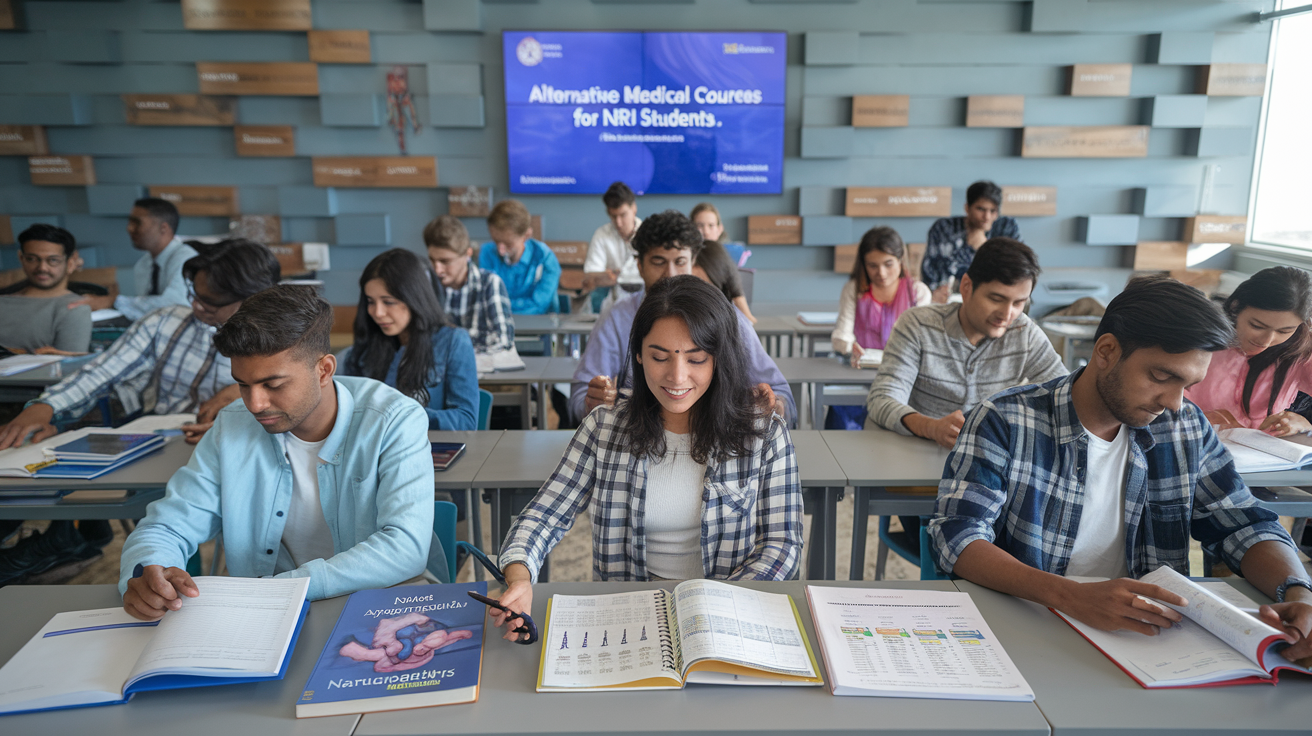
Now that we’ve explored the challenges and opportunities associated with the NRI quota for MBBS, let’s turn our attention to alternative medical courses that NRI students can consider. While MBBS remains a popular choice, there are other exciting options in the field of healthcare that can lead to rewarding careers.
Bachelor of Physiotherapy
We understand that physiotherapy is an increasingly important field in healthcare, focusing on physical rehabilitation and improving mobility. For NRI students interested in this area, the Bachelor of Physiotherapy program offers an excellent alternative to MBBS.
Here are some key points about the Bachelor of Physiotherapy program:
- Duration: Typically 4.5 years, including internship
- Focus: Diagnosis and treatment of movement disorders
- Career prospects: Hospitals, sports clinics, rehabilitation centers
NRI students pursuing this course can benefit from:
- Hands-on clinical experience
- In-depth understanding of human anatomy and physiology
- Opportunities to specialize in areas like sports physiotherapy or neurological rehabilitation
While the reference content doesn’t provide specific information about NRI quotas for physiotherapy programs, we can infer that many institutions offering MBBS seats to NRI students may also have similar provisions for allied health science courses.
B.Sc. in Biotechnology
Another exciting alternative for NRI students is the Bachelor of Science in Biotechnology. This field combines biology and technology, offering a diverse range of career opportunities in research, pharmaceuticals, and healthcare.
Key aspects of B.Sc. Biotechnology programs include:
- Duration: Usually 3 years
- Focus: Molecular biology, genetic engineering, and bioprocessing
- Career prospects: Research laboratories, pharmaceutical companies, biotech firms
We believe that NRI students interested in this field can benefit from:
- Exposure to cutting-edge technologies
- Opportunities for research and innovation
- Potential for interdisciplinary work with medical professionals
While our reference content doesn’t specifically mention NRI quotas for biotechnology programs, it’s likely that many institutions offering seats to NRI students in medical courses also have provisions for related science programs.
To help NRI students compare these alternatives with MBBS, we’ve created a table highlighting some key differences:
| Aspect | MBBS | Bachelor of Physiotherapy | B.Sc. Biotechnology |
|---|---|---|---|
| Duration | 5.5 years (including internship) | 4.5 years (including internship) | 3 years |
| Focus | General medicine and surgery | Physical rehabilitation | Molecular biology and genetic engineering |
| Clinical exposure | Extensive | Moderate to High | Limited |
| Research opportunities | Available | Available | Extensive |
| NRI quota availability | Confirmed in many institutions | Likely available | Likely available |
We want to emphasize that while these alternative courses may not have the same prestige as MBBS, they offer valuable opportunities in the healthcare and life sciences sectors. NRI students should consider their personal interests, career goals, and the evolving job market when making their decision.
It’s important to note that the application process, eligibility criteria, and fee structure for these alternative courses may differ from those of MBBS programs. We recommend that interested NRI students research specific institutions and their offerings, as the availability of NRI quotas and other details may vary.
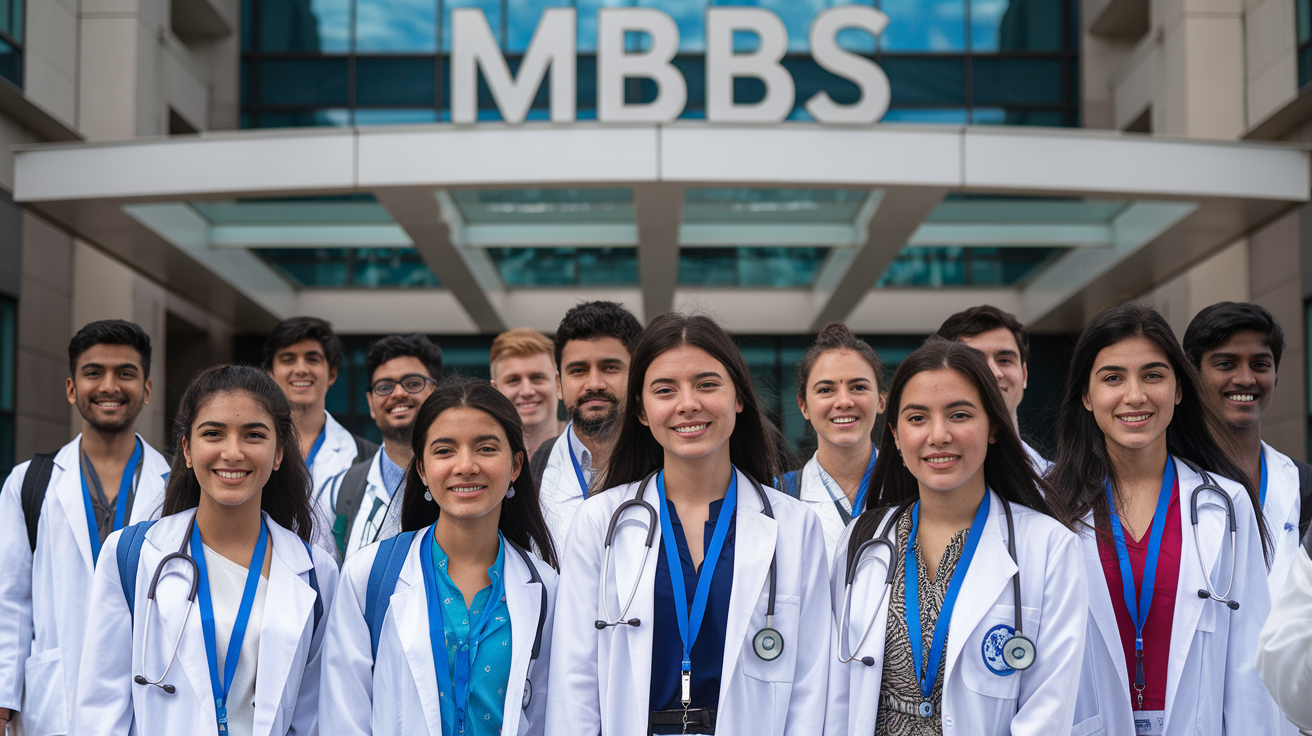
The NRI quota for MBBS in India offers a unique opportunity for eligible students to pursue their medical education in renowned institutions. We’ve explored the eligibility criteria, application process, fee structures, and the challenges and opportunities that come with this pathway. It’s clear that while the NRI quota provides a valuable option, it requires careful planning, thorough documentation, and a clear understanding of the financial commitments involved.
We encourage aspiring medical students to carefully consider their options and seek expert guidance when navigating the NRI quota application process. Whether you choose to pursue MBBS or explore alternative medical courses, the key is to stay informed and prepared. Remember, your journey to becoming a medical professional is not just about securing admission but also about finding the right fit for your aspirations and capabilities. Let’s embrace the opportunities that lie ahead and work towards achieving our dreams in the field of medicine.
💬 Instant WhatsApp Support
Get real-time assistance for urgent queries about applications & deadlines
Average response time: 15 minutes
📞 One-on-One Consultation
Speak directly with our senior admission counselors for comprehensive guidance
Available Mon-Sat: 9 AM - 7 PM IST
Sunday: 10 AM - 4 PM IST
📩 Detailed Inquiry Form
Share your details and our experts will craft a personalized admission strategy

